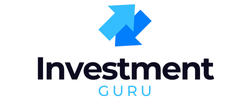When homeowners tap into their equity, two of the most popular options are a home equity line of credit (HELOC) or a cash-out refinance. Both allow you to unlock the value built up in your home, but they don’t just differ in structure—they also come with very different tax implications. Understanding these rules upfront can help you avoid surprises and make smarter borrowing decisions.
The IRS allows some mortgage interest to be tax-deductible, but the rules have tightened in recent years. Whether the interest on your HELOC or cash-out refinance is deductible depends largely on how you use the funds. For example, interest is typically deductible if the money goes toward home improvements, but not if it’s used for personal expenses like paying off credit cards or covering tuition.
A HELOC is often more flexible, letting you borrow as needed, but the tax deduction rules are the same: the interest is only deductible if the money is used to “buy, build, or substantially improve” the home securing the loan. A cash-out refinance, on the other hand, replaces your original mortgage with a larger one, giving you a lump sum of cash. The interest on the refinanced balance can remain deductible, but the cash-out portion follows the same improvement-only rule.
In 2025, these tax differences matter more than ever. With interest rates still elevated and homeowners carefully weighing the costs of borrowing, understanding how your loan choice affects your taxes could save you thousands. Failing to plan ahead may mean missing out on deductions—or worse, assuming you qualify when you don’t.
In this article, we’ll break down the tax implications of HELOCs vs. cash-out refinancing in simple terms. You’ll learn when interest is deductible, the IRS rules that apply in 2025, and practical tips to maximize your tax savings while staying compliant.
Table of Contents
What Is a HELOC?

A Home Equity Line of Credit (HELOC) is a revolving line of credit secured by your property. Similar to a credit card, you can draw funds up to a set limit and repay them over time. HELOCs typically offer variable interest rates, and interest may be tax-deductible if the funds are used for qualified home improvements. According to the IRS Publication 936, borrowing must be for buying, building, or substantially improving your primary or secondary residence to qualify for the mortgage interest deduction.
What Is a Cash-Out Refinance?
A cash-out refinance replaces your existing mortgage with a new, larger loan. You withdraw the difference as cash. This method usually carries fixed rates and structured payments. Like a HELOC, tax deduction benefits depend on how you use the funds. The Tax Cuts and Jobs Act of 2017 significantly limited deductible uses, meaning personal expenses like debt consolidation or tuition payments don’t qualify for deductions.

HELOC vs Cash-Out Refinance Tax Implications Overview
The core tax difference between these two methods hinges on deductible uses. If funds are applied toward qualified improvements, interest can often be deducted. If not, the IRS won’t allow deductions.
| Feature | HELOC | Cash-Out Refinance |
|---|---|---|
| Loan Type | Revolving credit line | New mortgage replacing existing one |
| Interest Rate | Generally variable | Generally fixed (option for ARM) |
| Tax Deduction Eligibility | Only qualified home improvements | Only qualified home improvements |
| Use of Funds | Multiple draws, flexible use | Lump sum, less flexibility |
| Closing Costs | Lower | Higher |
HELOC Tax Implications Explained
Before 2018, HELOC interest could be deducted for many personal uses, including paying off credit cards. Today, the IRS disallows deductions unless funds improve your home. For example, remodeling a kitchen funded by a HELOC is deductible, but using it to buy a car is not.
Tax reporting requires careful record-keeping. You must save receipts, contracts, and proof that borrowed funds enhanced your property. Without this documentation, deductions may be denied during an audit.
Key IRS Rules for HELOC Deductions
- Loan must be secured by your primary or secondary home.
- Funds must be used to “buy, build, or substantially improve” the property.
- Deductions are capped at a combined mortgage balance of $750,000 ($375,000 if married filing separately) per IRS limits.
Cash-Out Refinance Tax Implications Explained
With a cash-out refinance, tax deductibility is equally tied to home use. If you take $50,000 in cash and renovate your basement, you may deduct the interest. But if you use it for vacations, IRS guidelines (IRS Homeowner Tax Guide) prohibit deductions.
Additionally, refinancing resets your mortgage term. While this could extend repayment and increase total paid interest, it may lower monthly payments, freeing up cash-flow. From a tax perspective, the larger loan balance only benefits if tied to home improvement.

Side-by-Side Comparison: HELOC vs Cash-Out Refinance Tax Implications
- Flexibility: HELOCs allow multiple draws, making it easier to track funds dedicated to improvements. Cash-out refinance provides one lump sum, increasing the chance of commingling funds.
- Deductions: Both options follow identical rules for deductibility — improvements only.
- Documentation: HELOCs may require ongoing documentation of each draw’s use, while cash-out refinancing requires proof of lump-sum application.
Costs and Fees Comparison
Beyond taxation, closing costs differ. HELOCs generally charge fewer upfront fees, while cash-out refinancing resembles a new mortgage transaction with appraisal, origination, and title expenses. Keep this cost structure in mind alongside tax benefits.
When to Choose HELOC vs Cash-Out Refinance
Consider a HELOC if:
- You want flexible borrowing over time.
- Home improvements will be ongoing, such as phased renovations.
- You prefer lower upfront costs and can manage variable rates.
Consider a Cash-Out Refinance if:
- You need large funds at once for a major project.
- You prefer predictable, fixed repayment terms.
- You plan to restructure your mortgage for better rates.
Steps to Maximize Tax Benefits
- Plan how to use funds: Document your project scope before borrowing.
- Keep meticulous records: Save contracts, invoices, and receipts for tax filing.
- Consult tax resources: Review IRS rules annually, as tax deductions may change in the future.
- Work with a CPA: A tax professional ensures proper classification of expenses.
FAQs About HELOC vs Cash-Out Refinance Tax Implications
- Are HELOCs tax deductible in 2024? Yes, but only if proceeds are used for qualified home improvements.
- Can I deduct cash-out refinance interest if I pay off debt? No, personal debt consolidation is not deductible under current IRS rules.
- What documentation do I need for deductions? Keep receipts, contracts, and improvement records tied to your property.
- Is rental property eligible for deductions? In some cases, yes, but tax treatment differs. Review IRS guidelines for rental properties.
- Do state tax rules differ? Yes — state income tax rules vary and may allow or disallow deductions separately from federal law.
- Which has lower closing costs? HELOCs typically have lower upfront costs than cash-out refinancing.
- How do interest rates compare? HELOC rates are variable, while cash-out refinancing generally locks fixed terms.
- Does a larger loan balance affect deductibility? Yes, IRS limits combined eligible mortgage debt at $750,000 for deductions.
- Is it easier to track funds with HELOCs? Yes, since loans are drawn incrementally, you can document each draw’s purpose more effectively.
- When should I avoid both options? If you plan to use funds for non-home purposes or cannot handle debt obligations, neither improves tax outcomes.
Conclusion: Making the Right Choice
Whether you pursue a HELOC or cash-out refinance, tax implications depend entirely on how you use the borrowed funds. Both products share the same IRS restrictions: improvements qualify, personal expenses do not. Choosing the right strategy comes down to your project type, financing structure, and long-term mortgage plans.
The smartest move is to align your borrowing with home improvement goals, maintain clear documentation, and consult professional tax advice. Doing so ensures you won’t miss valuable deductions. Start reviewing your home’s needs today, compare rates, and plan your financial pathway to maximize equity and minimize taxes.


